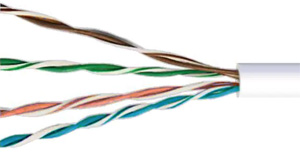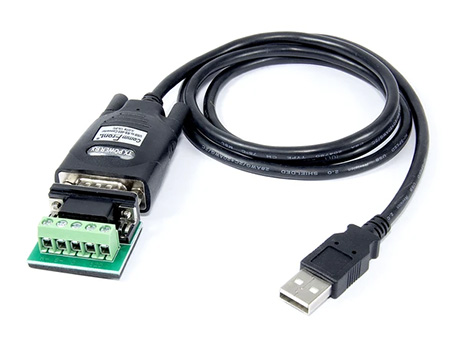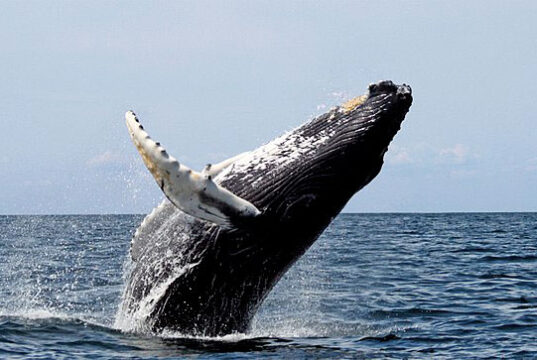Monitor - ISSN 1472-0221
The Newsletter for Data Acquisition and Control
Issue 276 November 2021
Thanks very much for subscribing. This month - how to solve noisy measurement problems. You can download a pdf copy of the newsletter here.
Contents
* Seven Ways to Remove Noise
* Your Data Acquisition Questions Answered: Collecting data over RS485
* Data Acquisition News Round-Up
How to Remove Noise from your Measurements
Web link: https://www.windmill.co.uk/noise.html
All measurements are contaminated by noise. It may be generated within the electrical components of the input amplifier: internal noise. It may also be added to the signal as it travels down the wires to the amplifier: external noise. Noise is more of a problem for millivolt signals, from sensors like thermocouples, than it is for larger, volt-level, signals.
How do you minimise the effect of noise on your signal?
Reducing Noise Generated by the Amplifier
Internal noise arises from thermal effects in the amplifier and although it can be minimised it cannot be removed completely. (The amplifier in data acquisition equipment increases the voltage signal to a level suitable for the analogue-to-digital converter.)
Typically amplifiers will generate a few microvolts of internal noise which limits the resolution of the signal to this level. The amount of noise added to the signal depends on the bandwidth of the input amplifier, from the lowest frequency allowed into the amplifier to the highest. Amplifiers with a bandwidth matching that of the input signal will be less noisy than, say, feeding a 100 Hz signal into an amplifier that covers 0 to 10 MHz.
Integrating A-D converters reduce noise by integrating the signal over a period, which is effectively reducing the bandwidth.
Reducing Environmental Noise
External noise reduction is much more of an art form. Noise is added because the signal leads act as aerials picking up environmental electrical activity. Much of this is common to both signal wires, and a differential amplifier will remove a lot of this common mode voltage.
Differences between the signal wires (for example if they are separated rather than twisted together) will lead to residual voltages being added to the signal, increasing noise. Keeping the signal wires as short as possible, twisted together and as far away from electrical machinery as possible, will help. You can also shield your signal wires.

Filtering Noise
Filtering can reduces noise errors in the signal. For most applications a low-pass filter is used. This allows through the lower frequency components but attenuates the higher frequencies. The cut-off frequency must be compatible with the frequencies present in the actual signal - as opposed to possible contamination by noise - and the sampling rate used for the A-D conversion.

A low-pass filter that's used to prevent higher frequencies, in either the signal or noise, from introducing distortion into the digitised signal is known as an anti-aliasing filter. These generally have a sharper cut-off than the normal low-pass filter used to condition a signal. Anti-aliasing filters are specified according to the sampling rate of the system and there must be one filter per input signal.
Seven Ways to Reduce Noise
- Keep the signal wires short
- Keep the wires away from electrical machinery
- Use twisted pair wires
- Use differential inputs to remove noise common the both wires
- Use an integrating A-D converter to reduce mains frequency interference
- Filter the signal
- Consider shielding the wires
Further Reading
Filtering: How to Remove Interference from your Signal
https://www.windmill.co.uk/filter.html
Fixing Fluctuating Measurements
https://www.windmill.co.uk/fixing-fluctuating-measurements.html
Using Differential or Single-Ended Inputs to connect your Signals?
https://www.windmill.co.uk/differential.html
Your Data Acquisition Questions Answered: Collecting data from sensors using RS485
Question
I am looking for way to help me acquire data from sensors using RS485 to excel. Could you help me how you are doing it. I am using very simple system RS485
Answer
You will need a USB to RS485 adaptor to connect between the computer and the sensors. You can use ComDebug to collect the data from the sensors. This is free from https://www.windmill.co.uk/serial.html. If you want to use the other Windmill programs alongside ComDebug, to log and chart data for example, then Monitor subscribers can download these for free. Just email monitor@windmillsoft.com for your copy.

DAQ News Round-up
Welcome to our round-up of the data acquisition and control news. If you would like to receive more timely DAQ news updates then follow us on Twitter - @DataAcquisition - or grab our rss feed.
Sensor determines the toxicity of honey
It detects the presence of nitrobenzene, a dangerous toxin that can contaminate honey and other popular foods, in a matter of minutes.
Source: Eureka Alert
https://www.eurekalert.org/
US military offers $50,000 to predict where sensors drift in the ocean
The Forecasting Floats in Turbulence competition, run by the US Defense Advanced Research Projects Agency, is a challenge to predict where drifting sensors in the Atlantic will end up in 10 days in order to win a prize
Source: New Scientist
https://www.newscientist.com/
IoT devices communicate through light
A research team of IMDEA Networks Institute has introduced Internet of Things (IoT) devices that communicate without any batteries and harvest energy and receive data through visible light
Source: IMDEA Networks Institute
https://networks.imdea.org/
Wearable sensors help researchers understand effects of air pollution on health
Researchers are modelling air pollution and airflow in cities and exploring the effect of interventions such as roadside hedges or medication for at-risk people such as asthmatics.
Source: Imperial College London
https://www.imperial.ac.uk/
Sensors show how more whales in the world would combat climate change
Tags with an accelerometer, GPS, microphone and camera let scientists calculate for the first time how much whales eat, and poo. They found that more whales means more iron in the water leading to more plankton taking up CO2.
Source: SCUBA News
https://news.scubatravel.co.uk/
